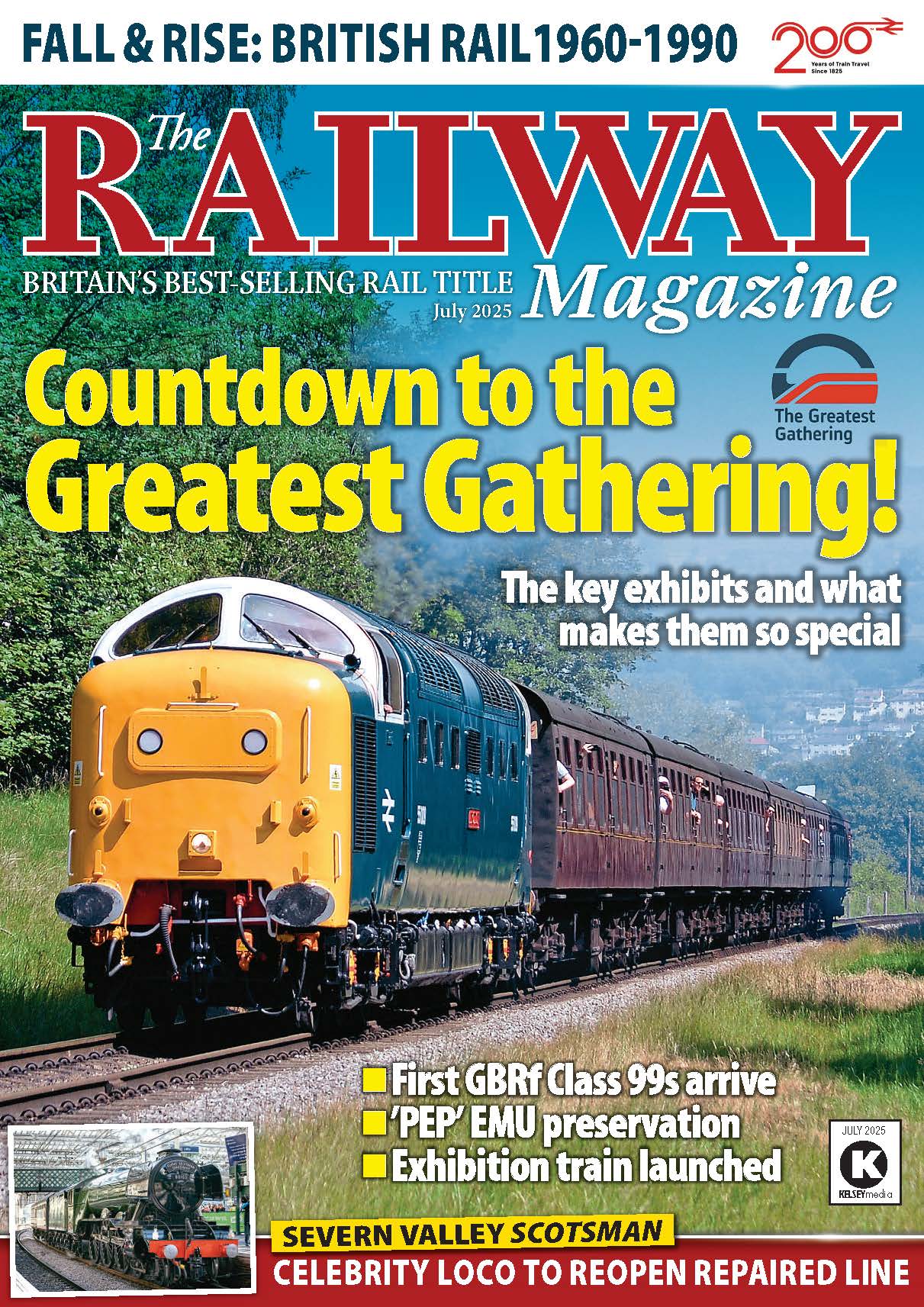
December 1950: Railway Photography By Canon Eric Treacy, M.B.E.
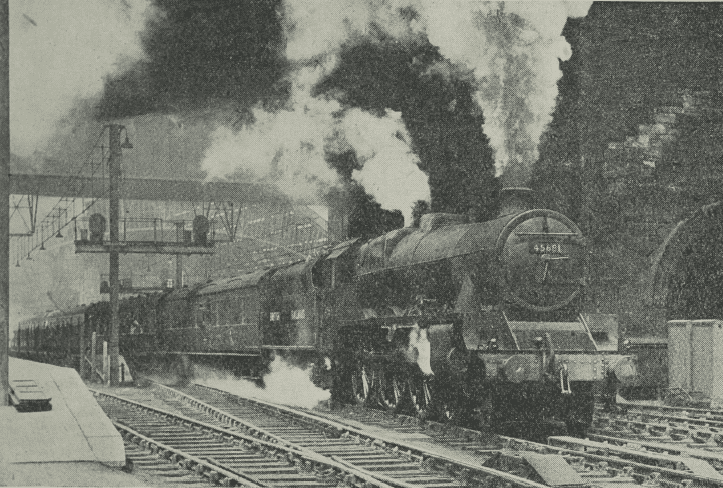
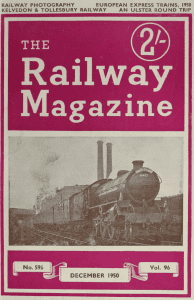 TWENTY years ago, I snapped a moving train from the window of another moving train at Crewe. Surprisingly, the result was recognisable as a train—but only just. Thus encouraged, I shot hopefully from the end of station platforms, with a series of cameras ranging from a borrowed Leica to an ancient reflex about the size of a piano accordion. My best results were of various railwaymen who were always ready to pose for me! However, I kept at it, and in December, 1936, The Railway Magazine published one of my photographs of a Liverpool-London express. Thus rewarded, and considerably helped by the advice of such good folk as Maurice Earley and E. R. Wethersett, I graduated to the stage when I could produce train pictures which could stand up to the searching, but just, criticisms of my fellow members of the Railway Photographic Society. Came the war, and my departure into the Forces. The war ended, I took up my hobby again with increased enthusiasm, after six years in which I was concerned with more serious things than photography. I receive many letters from enthusiasts on the subject of train photography, and I will now try to deal with the sort of questions that I am most frequently asked in these letters.
TWENTY years ago, I snapped a moving train from the window of another moving train at Crewe. Surprisingly, the result was recognisable as a train—but only just. Thus encouraged, I shot hopefully from the end of station platforms, with a series of cameras ranging from a borrowed Leica to an ancient reflex about the size of a piano accordion. My best results were of various railwaymen who were always ready to pose for me! However, I kept at it, and in December, 1936, The Railway Magazine published one of my photographs of a Liverpool-London express. Thus rewarded, and considerably helped by the advice of such good folk as Maurice Earley and E. R. Wethersett, I graduated to the stage when I could produce train pictures which could stand up to the searching, but just, criticisms of my fellow members of the Railway Photographic Society. Came the war, and my departure into the Forces. The war ended, I took up my hobby again with increased enthusiasm, after six years in which I was concerned with more serious things than photography. I receive many letters from enthusiasts on the subject of train photography, and I will now try to deal with the sort of questions that I am most frequently asked in these letters.
Monthly Subscription: Enjoy more Railway Magazine reading each month with free delivery to you door, and access to over 100 years in the archive, all for just £5.35 per month.
Click here to subscribe & save
It is understandable that a photographer will claim that his own apparatus is the best. After years of experimenting, during which I have used every camera from the Leica, with its 35 mm. film, to the large plate camera using 9 X 12 cm. plates, I am now convinced that the best camera for this kind of work is the Press camera fitted with a focal plane shutter and a wire direct vision viewfinder.
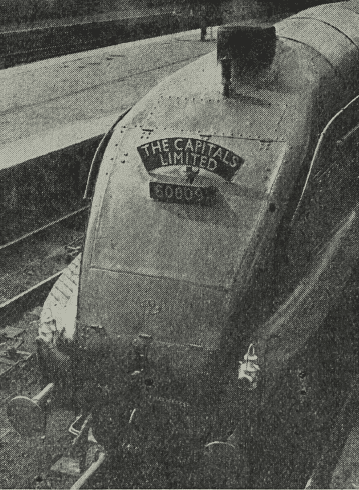
The advantages are that the use of plates enables the photographer to develop each exposure separately, thus making it possible for each plate to be developed according to the lighting conditions when the exposure was made ; that a fast—moving train is not an easy thing to sight in the small prism view finders fitted to many folding cameras, and a wire frame finder makes it possible to watch the train full-size until the moment of exposure; and that to arrest the movement of a train travelling over 50 m.p.h., a shutter operating as near the plate as possible, and at a speed of not less that 1/500 of a second is required.
Focal plane shutters, consisting of two blinds operated by a spring mechanism, move across the sensitive surface at a speed regulated by the tension of the spring and the width of the slit between the two blinds, with genuine speed down to 1/800 of a second, which is sufficient to stop all but the very fastest trains for
the photographer. One sometimes doubts the accuracy of these shutters when marked at 1/2000 of a second.
My own camera is a Zeiss Contessa Nettel Press Camera taking a 9 X 12 cm. plate, and fitted with a 6 in. Ross Xpress Coated lens with an aperture of f4.5. It is 14 years old, and is as good now as it was in 1936. This is due, I believe to my custom of sending it every winter to be cleaned and to have the shutter speeds overhauled. It has the disadvantages that it is heavy to carry about, and that plates can be loaded only in a dark room, whereas a film camera can be reloaded in the daylight. Be that as it may, it is a camera that I know and treasure ; and I naturally think it is the best for the job. Practically any camera will produce good results in this kind of photography provided that it has a good anastigmat lens and a reliable shutter; that the case is light proof ; and that it is not asked to do more than it is capable of. For instance, a shutter with a maximum speed of 1/100 of a second will not stop a train doing more than 25 m.p.h. The camera must be held quite still when the exposure is being made; by far the most common reason for unsatisfactory results is camera-shake at the moment of exposure. Due regard must also be given to the strength of the light at the time of the exposure, and the shutter and aperture adjusted accordingly.
There is not much to choose between the lenses of any of the leading makes. I have used the following lenses at various times in the last 20 years : Zeiss Tessar, Cooke Aviar, Ross Xpress, and Dallmeyer Pentac, and the results have been excellent.
In spite of the reputation of the Continental lenses, it is my opinion that no better lenses are made than those of Ross, Taylor Hobson, and Cooke. My Cooke Aviar was a lovely lens, and so is my Ross Xpress.
The focal length of the lens is important. If it is too short, it will result in distortion of the image. By that I mean that the front of the train will appear disproportionately larger than the back. If the focal length is too long, the depth of focus will be small, and it will be almost impossible to achieve sharp focus along the whole length of the train. This latter problem can be solved by the use of a swing front on the camera, a fitting which must be operated with great care, but which will bring into sharp focus the plane along which it is swung.
My own conclusion is that a lens with a focal length of 6 in. on a plate 9 X 12 cm. is about right. It does not distort the image, and it gives a reasonably generous field of sharp focus, although there is not much margin, and one has to focus accurately. Proportionately, a lens with a focal length of 4.1- in. would be suitable for a 31/2 in. X 21/2 in. negative.
Today there is a vogue for the coated lens. I am not prepared to deny the claims which are made for these lenses ; to do so would be to question the results of scientific enquiry. The lens I use at present is coated, I use it both in my camera and in my enlarger, and I get admirable results with it, but I cannot detect that they are any improvement upon the results I got some years ago with my non-coated Cooke Aviar lens.
As a useful second string, I use a Super Ikonta film camera taking a 2 1/2 in. X 3 1/2 in. negative. This camera is fitted with a Zeiss Tessar lens and a Compur Rapid shutter exposing down to 1/400 of a second. It is an admirable camera for photographing in confined spaces (such as on the footplate) as it possesses a range finder. I also find it useful for capturing those more intimate aspects of the railway scene in which the larger camera would be too obtrusive. For instance, I used this camera to take a photograph in York Locomotive Depot, where the light was such that I had to open up to full aperture, and the shorter focus lens gave the greater depth of focus that I needed. One of my favourite pictures, taken in a bright interval between hail storms on Shap Fell, also was taken with this camera. These two instances, reproduced on pages 815 and 816, show what excellent results can be obtained with a folding film camera.
My advice to anyone taking up railway photography would be to purchase (new or secondhand) a film or plate camera fitted with a lens of aperture not less than f4.5 made by one of the reputable lens makers and a Compur Rapid or focal plane shutter. My own preference would be for a plate camera, but films will be found in many ways preferable. I would suggest that the negative should not be less than 3 1/2 in. X 2 1/2 in. I fear that the enthusiastic miniaturists will not agree with this. The Leica and the Contax (if you can afford them) are lovely cameras, a joy to handle and a joy to use; but I have not found them best for this kind of work. Whatever the experts may say, I do not think that they will produce as sharp a whole-plate enlargement as a
3;} in. X 2,‘; in. negative, for the obvious reason that in the latter case the degree of enlargement is less. Moreover, these cameras are very expensive, and beyond the reach of most amateurs. I would say on this point that good results depend more upon the user than on the camera. The photographer must understand how to use the light, how to compose his picture, and how to operate his camera.
I am often asked by those who are starting railway photography how they may obtain lineside permits. It took me ‘about five years to work my passage, and it was only after the second world war that I was granted the full facilities I required. It is understandable that the Railway Executive should be careful about granting permits, as inexperienced visitors on railway property can be a considerable hindrance and worry to the staff. I ascertained recently the policy of the Railway Executive about permits, and cannot do better than quote“ from the reply I received :—
“The general policy of British Railways in regard to amateur photography is normally to allow this on platforms and other public parts of passenger stations without a permit, provided that in the case of a ‘closed station’ the photographer is in possession of a travel or platform ticket. Such an arrangement is naturally subject to a condition that no interference is caused with the working of traffic, and the duties of the staff, and at other busy times it may not be practicable to allow it. (Much depends, of course, on the tactful way in which the photographer goes about his business.)
“As regards photography on linesides and other parts of railway premises not normally open to the public ; primarily in the interests of safety, this is not allowed unless the photographer first obtains a permit through the Public Relations & Publicity Officer of the Region concerned. While British Railways endeavour to give all reasonable and practicable encouragement to bona fide photographers whose work is of a recognised standard, the number of such permits is necessarily very restricted and we would advise applicants to support their case with as good evidence as possible of their qualifications. Permits are normally granted only for sections of line or other places free from third-rail electrification, nor are they readily granted in respect of all busy junctions or sections of line having tunnels or lengthy cuttings. A little careful research will nearly always discover suitable over-bridges, embankments, or other vantage points from which good photographs can be obtained without actually entering railway property.”
Before the war I used Agfa Isopan F plates, developed in Pyro Metol, and found them very good. Now that Agfa materials are no longer available, I have discovered an even better combination of plate and developer. Ilford HP3 plates developed in ]ohnson’s Fine Grain Developer are fast and almost grainless. My usual practice is to expose during the summer months (April to September) at 1/500 see. with aperture f11. I develop the result for 12 min. in the developer at 65 deg. The resultant negative is strong and grainless, and usually prints well on “soft” grade paper. I sometimes use Kodak P1200 plates. \Vith the same exposure, I develop them for 20-25 min. at the same temperature. In my film camera I use HP3 or Kodak S.S. Pan films, and obtain admirable results by following the makers’ instructions for developing.
It is, I am certain, a bad thing to change from one kind of plate (or film) to another, although necessity sometimes forces this on us. We shall achieve much better results if we standardise on a certain emulsion and developer, the joint performance of which we thoroughly understand.
I do not propose to say anything about dark room technique, as this is dealt with adequately in the standard photographic handbooks. I must, however, outline some of the reasons for spoiled negatives. The most frequent causes of failure are dirty Cameras or plate holders, which produce pin-holes on the negatives ; tight packing of slides in camera cases, which causes light streaks on the negatives; lack of constancy in temperatures of the developer, hypo, and washing water, which produce grain or reticulation; and dirty dishes or dusty darkroom resulting in a host of negative defects. All developers should be filtered before use.
All those who claim to be serious photographers will wish to undertake their own developing and printing. A large proportion of the satisfaction of this hobby is in the processes which follow the exposure. Moreover, we cannot expect the same painstaking treatment of our negatives by someone who knows nothing of our enthusiasms——nor our longing that a particular exposure should receive very special treatment. Therefore in our budget, we must allow for darkroom equipment, and a reliable enlarger.
Taking the photograph is, of course, the heart of the matter. It is not the slightest use having the right camera and a train in a perfect setting, if one is not able to make a satisfactory picture of it. Every photographer has a vision of his ideal picture ; it is something that he will never achieve, and a very good thing that he does not ! For it is the hope of one day achieving a study that will satisfy in every respect- that is our incentive ; and if ever we fulfilled our ideal. I think we should find our incentive gone. My aim in railway photography is not just to produce a technically flawless picture of a train, sharp all over, and so placed that neither trees nor telegraph poles sprout out of the boiler. What I want to do is to interpret in visual form the feeling that the railway arouses in me. It consists of so much that is intangible—-lighting, smells, sounds, relationships, memories, and so on. The first thing I would say about.“ taking the picture ” is that we should see the subject not so much as something to record, but as something which we are going to use to symbolise something much bigger than we can see through our view finder.
Let us now consider some practical details. The first is viewpoint. Fully 75 per cent. of the effectiveness of a railway photograph is governed by the setting in which the train is placed. It is this which makes the difference between a picture and a record. Therefore we need to precede our photography with some careful planning, for which it is necessary to know details about the position of the sun, the gradients, and the surrounding country. As we travel by train, we frequently shall spot places which will suit our purposes, and to these we can return when opportunity permits. I would far rather take one picture in the right setting, than half it dozen in undistinguished surroundings.
It goes without saying that we have to arrange our position so that nothing obtrudes from the background to interfere with the train. I remember once photographing a train at Hellifield without noting too carefully the background, only to find, when the negative was developed, that two cows on a distant hillside appeared to be perched on the top of the engine’s boiler. It will be found that certain engines have a viewpoint which suits them better than others. For instance, the formerly streamlined Class “ 7s ” of the L.M.R. are hideous when photographed almost head-on from ground level. They look rather like large black crows with wings outspread, about to “take off,” whereas, taken from a high viewpoint, above the height of the engine, the “ cut-off ” smoke box gives an impression of power and thrust. The rebuilt “Royal Scots ” are, in my opinion, best photographed from an angle of about 60 deg. so that the powerful looking double chimney is seen from the side. There will be many opinions about this ; and I will say only that even the ugliest of modern engines will be found (like human beings) to have an angle from which they look their best !
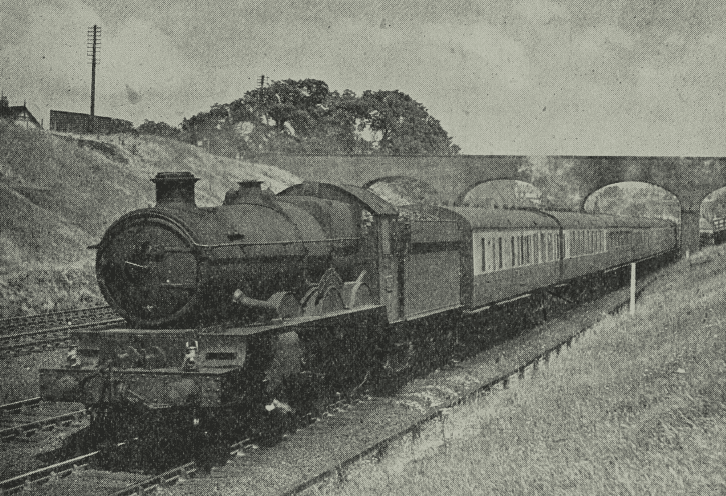
There are those who mount their cameras on tripods and focus carefully for each exposure; but my method is to work with a fixed mark scratched on my focusing scale. By trial and error I have discovered that point of focus which, at an aperture of f 6.3, larger than which I never expose, gives me a sharp image from about 30 ft. to infinity. For a wider field of focus, I reduce my aperture and make adjustment when developing. Most of my work is done near large stations and junctions, as in such places one finds a setting more typical of the railway than in the open country. Therefore my trains are not moving very fast, and I find an exposure of 1/500 of a second sufficient for my purposes. In open country, where trains are moving at 60 m.p.h. or more, I need to use a speed of 1/1000 of a second to arrest motion. The advantage of my fixed focus method is that I can come into action immediately. Quite often, something unexpected will turn up which would be lost if a tripod had to be set up and focus carefully adjusted. Moreover, there are some spots in which it would be quite impossible to spread oneself in such a way.
The aperture and shutter set, one waits for the moment of exposure. In this, never watch the train; that is fatal. Instead, the eye should be fixed, and kept fixed, on that point on the track at which it has been decided to take the photograph. If the camera is not fitted with open sights (wire frame viewfinder), difficulty may be found in sighting the train through a small glass viewfinder. In such circumstances, it may be advisable to compose the picture through the finder, with the camera mounted on a tripod, and make exposure as one watches the train by direct vision. VVhile on this point, I would like to add a note of advice on a small matter in which care is amply repaid. Have your slides numbered and keep a careful record of each exposure, noting the number of the slide, aid details of the train, place, date, time of day, plate used, light, and exposure. These particulars can be very useful in standardising the method of exposing and processing.
VVhenever I study my photographic records I find some new fact emerges of great value to my future activities. The quality and direction of the light are perhaps the most important factors in the production of a good photograph. In these islands, it is by no means easy to ensure the right lighting conditions. At least, that is true in the north, where I do most of my photography.
The sun, which is essential for Sparkling and lively results, can rarely be relied upon to shine when we want it. Clouds and hills are frequent companions. Perhaps the flatter areas of the south are luckier in this respect. During a recent holiday, I waited eight days for a gleam of sunshine.
Oddly enough, the light is photographically at its worst at midsummer, except in the evening and early morning, when the sun is lower in the sky. The months of spring and autumn give the best lighting conditions. During these months, the cooler atmosphere produces more exhaust from the engine, and the sun is not so high in the sky that it throws such dense shadows. The brittle light of winter can produce some very lovely results, but it is so weak that there is a risk of serious under-exposure in the shadows.
Normally, we should operate with the sun shining from behind us at an angle of not less than 45 deg. on the train. This should light up the wheels and motion of the engine. VVhen the sun is right overhead (as it is at midday in the summer) it produces the most disappointing results. Unfortunately, the sun is in this position for all the midday procession of trains to the South‘ as it passes my favourite pitch on Shap. I would not, however, lay down any hard and fast rules about this, as it is possible to obtain some striking results with the sun slightly behind the engine. In such circumstances, care must be taken that the shadowed front of the engine is not lost in an area of shadow behind it.
In this kind of photography, an exposure meter is not much use, as the conditions in which we work dictate our speed and aperture. The speed of the train governs our exposure, and the requisite field of focus governs the aperture. As ‘ I have said already, I make my adjustments in my developing dish rather than on my camera. Plates that I know to be under-exposed I give three or four minutes longer in the developer. One thing I recommend in all lighting conditions is the use of a lens hood. It is most important to cut out all unwanted light from the scene we are photographing. However great the temptation, I never expose in dull weather; the results are always muddy and lifeless.
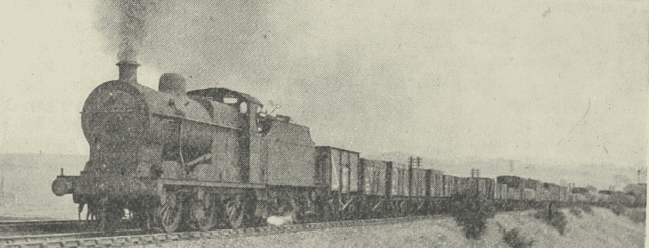
The archive is available to subscribers of The Railway Magazine, and can be purchased as an add-on from just £6. Not a subscriber? No problem…. Just click here to see the latest offers. Existing subscribers purchase the archive here or by calling our customer service team on 01507 529529.



